The Northwest Coast culture area stretches along the Pacific coast between the Cascade Mountains and the ocean. It extends north of California to Alaska. This is an area which is the home to many Indian nations who traditionally based their economy on the use of sea coast and river ecological resources. The Northwest Coast culture area stretches from the Tlingit homelands in Alaska to the Tolowa homelands in northern California.
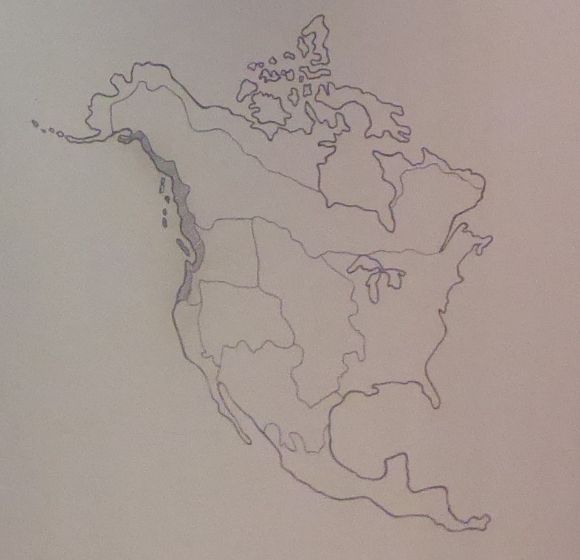 The shaded area on the map shown above shows the Northwest Coast culture area.
The shaded area on the map shown above shows the Northwest Coast culture area.
In his book Northwest Coast Indian Painting: House Fronts and Interior Screens, Edward Malin writes:
“This narrow littoral was a region of immense physical complexity, an oceanic environment clothed in limitless forest covering the rugged and precipitous mountain ranges.”
Edward Malin also describes it this way:
“The region is an immense symphony of churning ocean, occasionally becalmed, but never tranquil, seemingly countless inlets and impregnable fjords, and mountain chains, one following another mantled in a dense forest of red cedar, spruce, and hemlock.”
The Northwest Coast can be divided into three distinct cultural provinces:
- Northern: This includes the Tlingit, Tsimshian (Nisg’a), Haida, Haihai, and Haisla. The social structure of these tribes was rigidly organized and hierarchical.
- Central: This includes the Kwakiutl (Kwakwaka’wakw’), Nootka (Nuu-chah-nulth), Bella Coola (Nuxälk), Bella Bella (Heiltsuk), and Oowekeeno. The ownership of inherited privileges among these tribes was often dramatized in theatrical rituals and personified in carved masks.
- Southern: This includes the Coast Salish, southern Athapaskans, and Chinook. This is the least homogeneous area in the Northwest Coast and shows ties with California to the south and the Plateau to the east.
The Maryhill Museum of Art near Goldendale, Washington, has a collection of Northwest Coast artifacts on display.
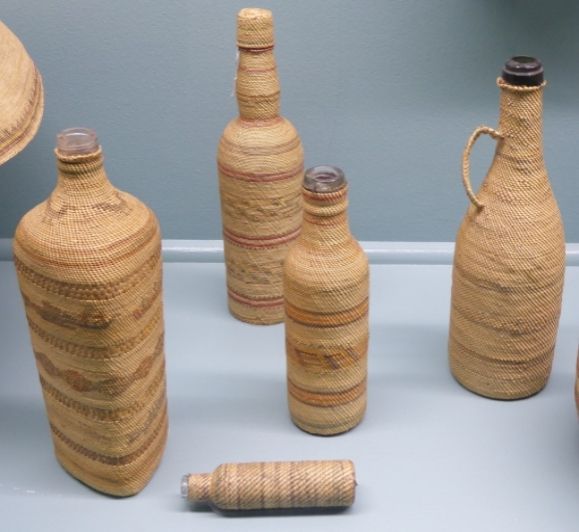 Shown above are some Makah or Nuu-chah-nulth basketry bottles. These were novelty items made for sale to non-Indians. The weavers would demonstrate their skill by fitting the weaving to the bottle.
Shown above are some Makah or Nuu-chah-nulth basketry bottles. These were novelty items made for sale to non-Indians. The weavers would demonstrate their skill by fitting the weaving to the bottle.  Shown above is a Nuu-chah-nulth rattle.
Shown above is a Nuu-chah-nulth rattle.
According to the Museum display:
“Bird shapes were common in Northwest Coast rattles and this example is typical of the West Coast style. Two separate pieces were carved and tied together with pebbles inside. Rattles were an important accessory during ceremonial dances.”
Clothing
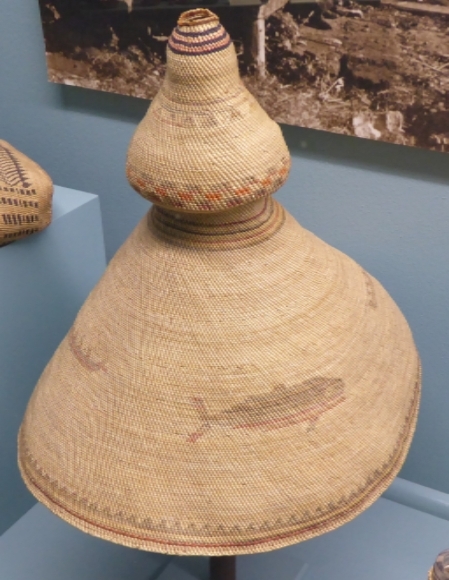 Shown above is a whaler’s hat made by Ellen Curley (Nuu-chah-nulth).
Shown above is a whaler’s hat made by Ellen Curley (Nuu-chah-nulth). 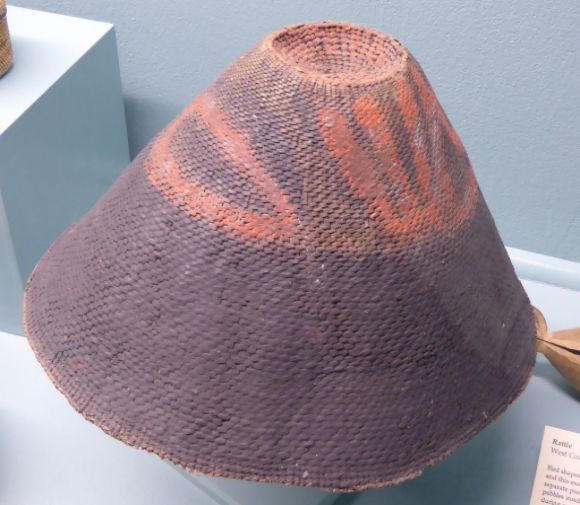 Shown above is a Nuu-chah-nulth basket hat. These hats were woven in two layers: an outer layer of split spruce root and an inner layer of cedar bark.
Shown above is a Nuu-chah-nulth basket hat. These hats were woven in two layers: an outer layer of split spruce root and an inner layer of cedar bark. 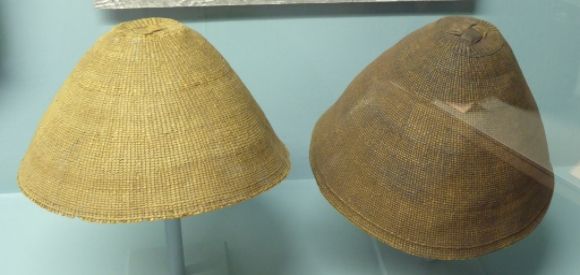 Shown above are undecorated basket hats from the Southern Northwest Coast. These hats were worn by people from all social classes as rain hats.
Shown above are undecorated basket hats from the Southern Northwest Coast. These hats were worn by people from all social classes as rain hats. 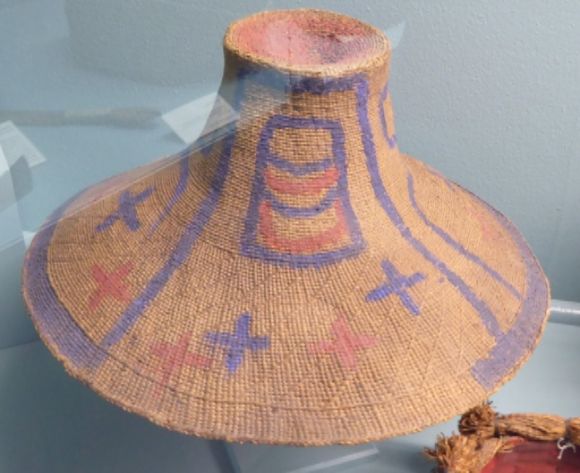

Shown above are basketry hats with painted designs. The rings added to the crown of the hat indicate that the owner had held a potlatch.
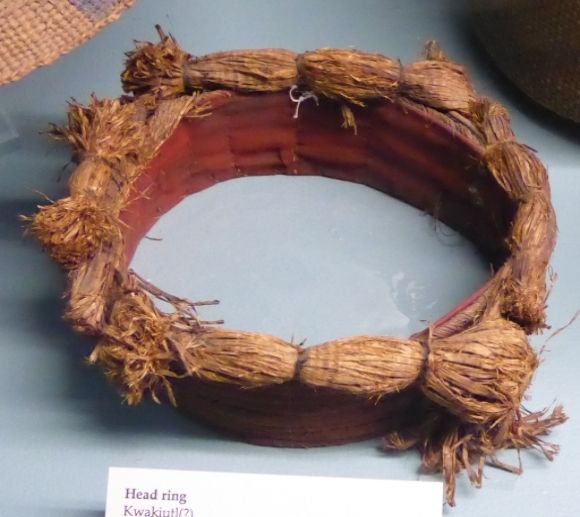 Shown above is a Kwakiutl headring.
Shown above is a Kwakiutl headring.
According to the Museum display:
“This head ring was probably worn by a dancer representing the Hamatsa spirit in the winter dances. The Hamatsa, a wild cannibal spirit, was ritually tamed during the ceremony. The privilege of representing this spirit belonged only to members of high status families.”
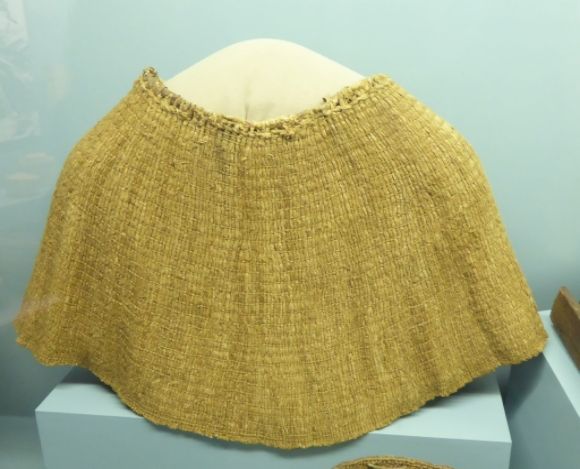 Shown above is a rain cape made from shredded cedar bark.
Shown above is a rain cape made from shredded cedar bark. 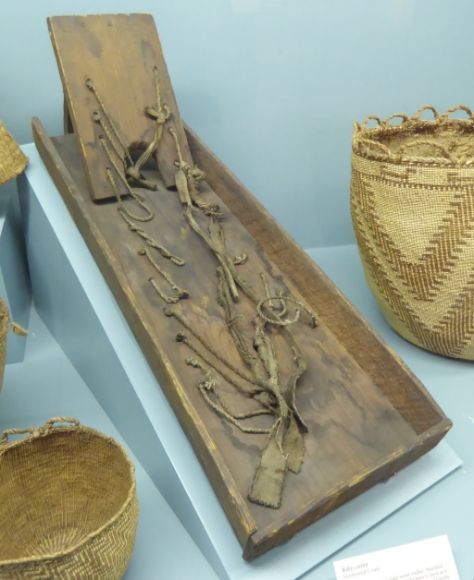 Shown above is baby carrier.
Shown above is baby carrier.
According to the display:
“Babies were carried in cedar wood cradles. Shredded cedar bark was wrapped around the baby to serve as a diaper. This type of cradle was suspended horizontally by four ropes. The mother attached a cord to her toe which allowed her to rock the baby.”
Tools
 Knife handles were often carved with a crest figure like the raven shown above.
Knife handles were often carved with a crest figure like the raven shown above. 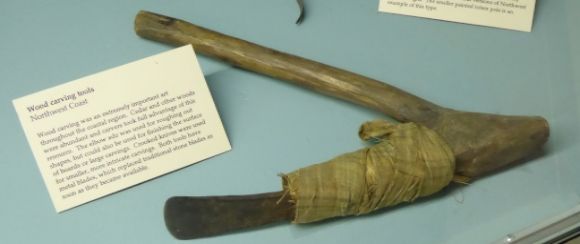 Wood carving was important and a highly-developed skill among Northwest Coast peoples. The elbow adze shown above was used for roughing out shapes as well as for finishing the surface of boards.
Wood carving was important and a highly-developed skill among Northwest Coast peoples. The elbow adze shown above was used for roughing out shapes as well as for finishing the surface of boards. 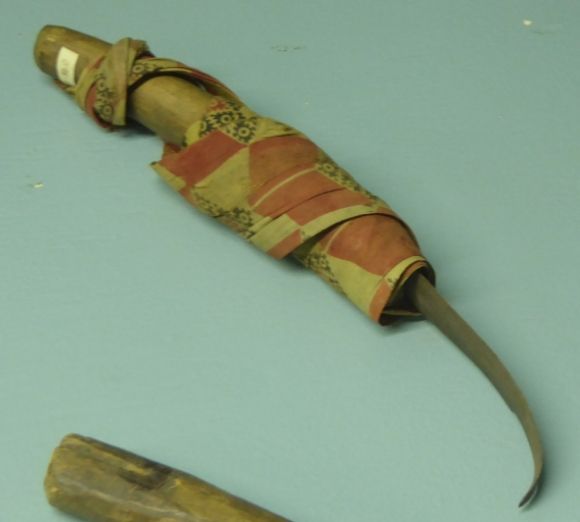 Shown above is another woodworking tool.
Shown above is another woodworking tool. 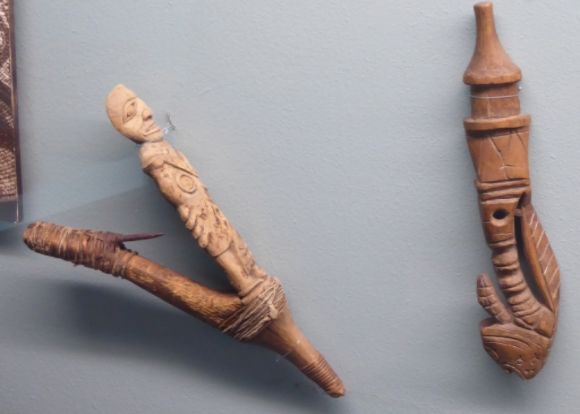 Shown above are Haida halibut hooks.
Shown above are Haida halibut hooks. 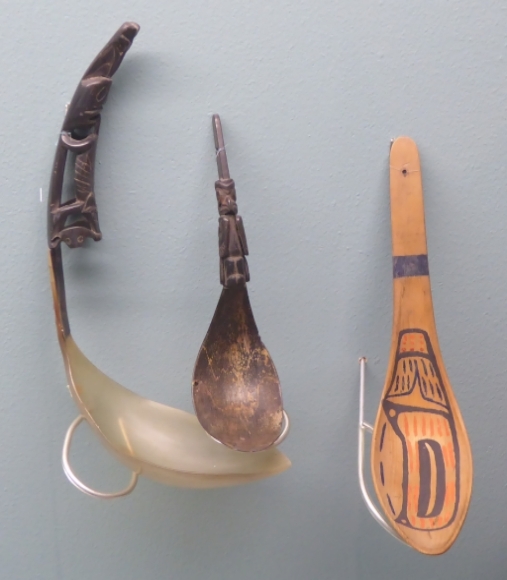 Spoons were traditionally made from wood and horn. Wooden spoons often had carved or painted designs. The small black spoon is made from mountain goat horn.
Spoons were traditionally made from wood and horn. Wooden spoons often had carved or painted designs. The small black spoon is made from mountain goat horn.
Boats
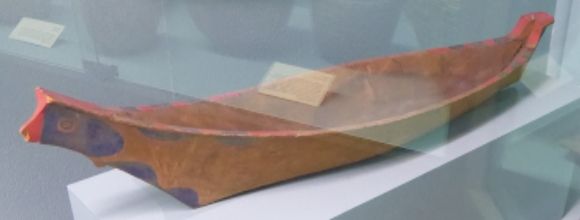 Shown above is a model of a Nuu-chah-nulth canoe.
Shown above is a model of a Nuu-chah-nulth canoe. 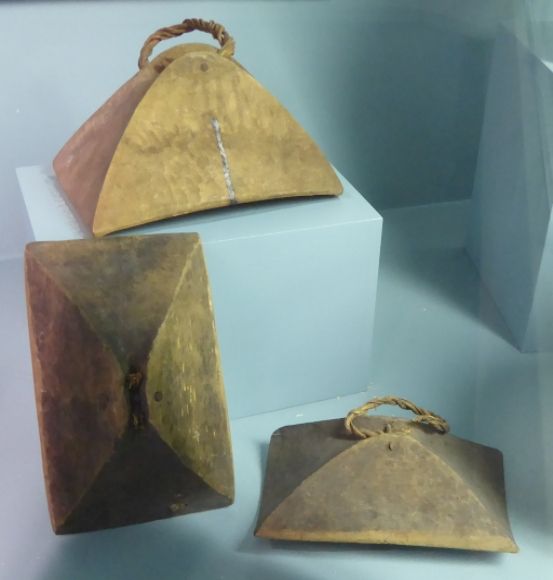 Shown above are canoe bailers made from carved cedar. The triangular shape was used so that the bailers would fit snugly into the bottom of the canoe when not in use.
Shown above are canoe bailers made from carved cedar. The triangular shape was used so that the bailers would fit snugly into the bottom of the canoe when not in use.
Totem Poles
The totem pole has become the symbol of the Northwest Coast tribes. Museum curator Audrey Hawthorn, in her book Kwakiutl Art, writes:
“It is an art form unique to the region, characterized by its tall, columnar form bearing images of humans, birds, and other animals of the sea and forest.”
She also says:
“The totem pole is a precise art form embodying a statement of beliefs about important social realities—descent, inheritance, power, privilege, and social worth—of the people who inhabited the Northwest Coast before the advent of European explorers and settlers.”
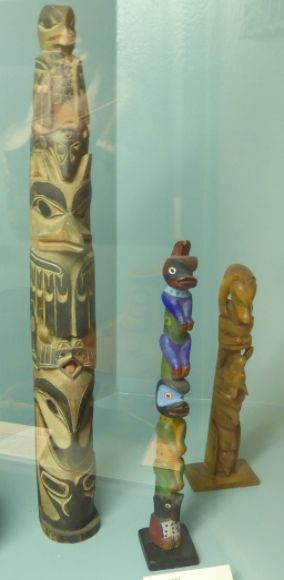 Shown above are some small totem pole models.
Shown above are some small totem pole models.
Masks
Masks were a part of many Northwest Coast ceremonies.
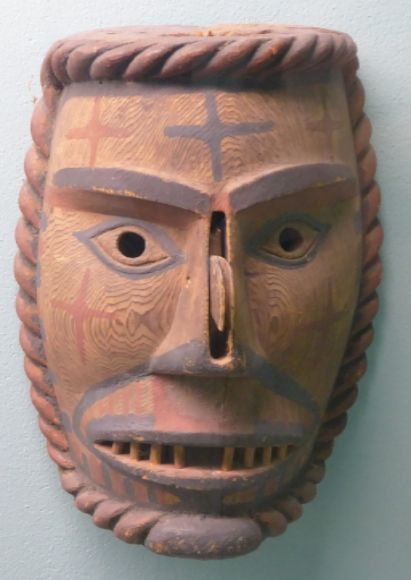 Shown above is a Nuu-chah-nulth ceremonial mask. The nose of this mask rotates, allowing the mask to represent several different characters.
Shown above is a Nuu-chah-nulth ceremonial mask. The nose of this mask rotates, allowing the mask to represent several different characters. 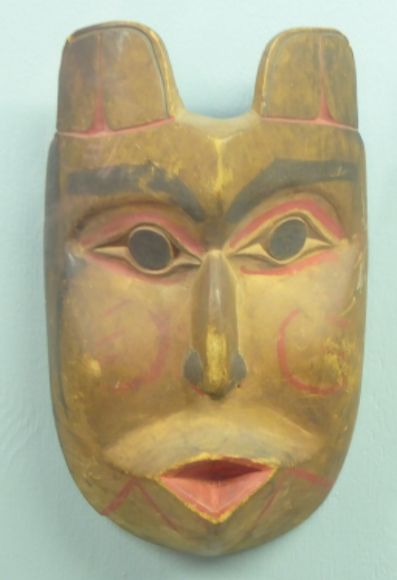
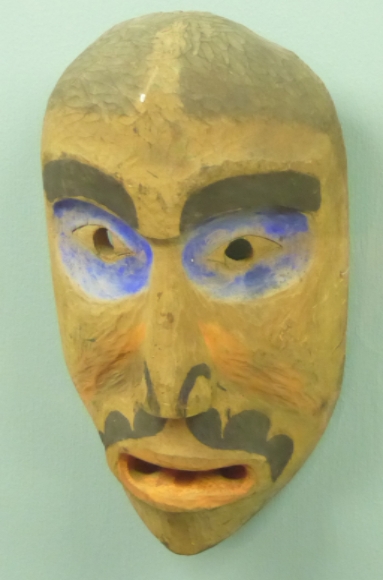
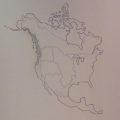
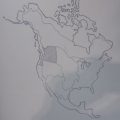
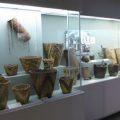
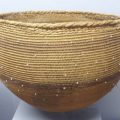
Leave a Reply